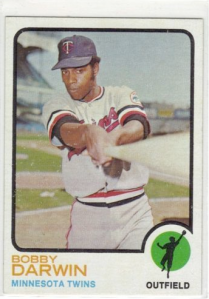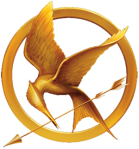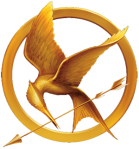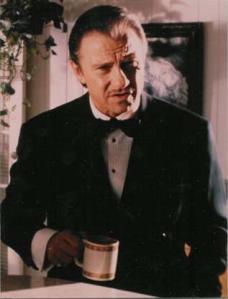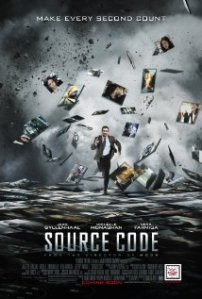
If you could alter Twins history — what would you change?
Joe Posnanski recently listed his “Top Ten Sports Code Moments” – ten hypothetical ‘do overs’ from the sports world. His inspiration comes from the movie, “Source Code,” where Jake Gyllenhayll is the subject of a military science project that sends him back to recent history to learn things that could alter the future.
For Posnanski’s “Sport’s Code” moments, the basic concept is you can’t change the outcome of events, only the inputs leading up to the event. You can’t know how the situation will play out, but you can make a few tweaks in hoping the situation plays out differently, at least.
I finally saw the movie on Netflix, no wait …Qwikster, no wait …Netflix, and I was expecting a slightly different premise based on Posnanski’s “Sports Code” premise. Oh well. Each are a bit different. In the “Sports Code” premise you can go back in time and change things. However, you can’t change the outcome of events, only the inputs leading up to the event. You can’t know how the situation will play out, but you can make a few tweaks in life’s source code in hoping the situation plays out differently, at least.
Posnanski came up with ten Sports Code moments for sports generally. I’m going to present 5 Twins Source Code moments — historical rewrites to change the history of the Minnesota Twins.*
* After this lost season, I’m not the only one whiling away my time playing what-if games about Twins history. Check out Nate Gilmore’s excellent Twins’ hypotheticals.
1) Kirby’s bean ball. Moments before Dennis Martinez threw the last regular season pitch ever to Kirby Puckett, I’d somehow induce Kirby to call for a timeout. I’d tinker with the source code to allow for just a few seconds for everyone to regroup themselves, Martinez to regrip the ball, Kirby to refocus. With my source code change, I believe Kirby would finish that final game of the 1995 season and be in great shape to start out 1996.
Kirby and the Twins have always formally insisted that Kirby’s subsequent onset of glaucoma was not a result of the beaning. But it’s not an explanation that sits well. During a pressbox visit in the late 1990’s, Kirby himself allegedly slipped off the official party line when he said, after watching a batter avoid an inside pitch, something like, “if I would have ducked, I’d still be playing.”
Twins fans got cheated out of several more years of quality Kirby time. I’m especially disappointed in not seeing him play beside Paul Molitor in 1996 when Molitor had a revival year returning to his hometown.
Mind you, Kirby likely would have continued in the fade from his peak years – who knows how fast? Twins fans did avoid the pain many fans feel when seeing their heroes hold on when the magic has dissipated. Of course, there was plenty of pain in seeing Kirby’s life unravel in the years after baseball was taken away from him. I can’t help but feel it would have all played out much better had Kirby ducked.
2) Tony Oliva’s Knee Injury
My memory of Tony Oliva was mostly that of a rickety designated hitter that everybody said: “you should have seen just a few years ago.” The culmination of this memory of Aching Tony was the brief and woeful experiment in the spring of 1976, where Tony served as the leadoff hitter in the first few road games. He would bat once and get replaced by a pinch-runner should he reach, and then walk over to the first base coaching box to take up coaching duties for the remainder of the game. Tony reached base only once in the four times the experiment was used.
To get a longer-lasting Oliva, I’d have to rewrite June 29, 1971 — the day that Tony wrenched his knee late in a game against the A’s. I guess I’d get Ron Perranoski to throw something different to Joe Rudi, so Rudi wouldn’t have lined one to right field, where Tony stumbled on the wet turf. After missing a few weeks, Oliva returned to hold onto his batting title for the 1971 season, but he was never the same player after that. After missing most of 1972, he returned as the Twins first DH when the AL adapted the rule in 1973.
3) The Strike
As a baseball fan, the one great avoidable tragedy of my lifetime was the 1994 strike. There probably aren’t enough software programmers in the world to reprogram all the egos that collectively accounted for the 1994 strike, but I’d try. For the Twins – well they weren’t going anywhere that season (final record: 53-60) – or anytime soon. Knoblauch was on his way to a phenomenal season – on pace to challenge the double record. We all would have gotten more Kirby-in-his-prime. Shane Mack had a great season, but with the strike, would take his talents to Japan.
After the strike, the economics of baseball changed and the small-market/crappy-stadium Twins were going to be buried for a while.
4) Morneau’s Slide
Justin Morneau was wonked on the head by the knee of Toronto shortstop John McDonald* on July 7, 2010 and his career has been in the hazy fog of a severe concussion ever since. Justin was having his best year yet, carrying an underachieving team through the first half of the 2010 season. The 2010 Twins would carry on fine without him for the remainder of the 2010 season, but his major bat was missed in the playoffs and he’s had another lost season for the floundering Twins of 2011.
My source code change? I’d send some signals from the bench on that day in Toronto – send Justin on a hit and run, perhaps – something to alter the arrival at second base. The routine play would remain routine. Justin might have another MVP. The 2011 Twins might not have been so wretched. And the future of the Twins would be so much more in focus.
* I beam with pride in seeing my baptismal name in major league box scores – even if the box scores don’t look too pretty.
5) Mauer
As a final piece of source code edit, I’d go back to 2001, Joe Mauer’s first season as a minor leaguer. There I would reprogram the minds of the Twins think-tank to reposition Mauer as an outfielder. I fully believe that Mauer’s best “value” to a baseball team is as a catcher. But one of the fun things about programming is that you can tinker with some code, run the experiment and then re-program and re-run the code, over and over again.
And I’m just so curious as to how this would go.
There is no guarantee that he’d stay healthy as an outfielder (just ask Kubel or Oliva), but could a career in the outfield mean a real shot at seeing Mauer make a run at .400? At the very least, it would be a joy to see a fully healthy Mauer applying that sweet lefty swing more predictably. Of course, with a healthy Mauer, Souhan would have to find another reason to get up in the morning.
Those are my five rewrites. What are yours?
My Twitter feed: Very_Well_Then
